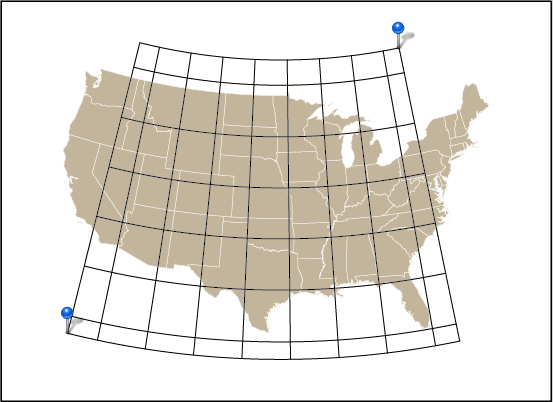

This is because of the way in which the 'tilted' Earth orbits the sun. At midwinter (21 December) you should deduct 23.45º from your reading, and at midsummer (21 June) add 23.45º. Unfortunately, this reading is only correct on 21 March and 21 September (the spring and autumn equinoxes).Note that the horizon is always 90º to the plumb line. The angle to measure when using the sun or North Star. If the sun is directly over the Equator, this is your latitude reading. Using the protractor, measure the smaller angle between the beam and the plumb line. When the shadows coincide, the beam is aimed exactly at the sun. Two shadows on the groud - beam aimed incorrectly At first, the nails will cast two separate shadows, so move the end of the beam up or down so that these two shadows move closer together. Instead, watch the shadows formed by the nails on the ground as you tilt the aiming beam up and down. As soon as it's noon, align the sighting nails on the quadrant's aiming beam with the sun.ĭO NOT USE THE SIGHT LINE TO LOOK DIRECTLY AT THE SUN.When the shadow cast by the stick crosses the north-south line, it's noon. Use a plumb line to make sure that the stick is vertical. To determine when it's noon (without a watch or radio) place a stick at the southernmost end of your north-south line.


The protractor should be centred on the pivot, from which the plumb line should be suspended. The aiming beam needs to be pivoted about its central point so that it can swing up and down. Make a quadrant similar to the one shown here.You can use a simple quadrant to measure latitude using either the sun or the North Star. Its major limitation, however, is that it isn't visible from the southern hemisphere.įor our purposes, we shall therefore assume that we're in the northern hemisphere. Furthermore, you can only see it at night, which isn't always convenient. To complicate matters further, the sun rises higher in summer than in winter, and this must be allowed for in any calculation.īeing so far away and only one of a myriad stars visible to the naked eye, the North Star isn't as easy to find as the sun. Accurate readings can only be taken at noon, when the sun is at its highest in the sky. However, measurement of latitude isn't as straightforward as you might think. Measurements using the sun are possible on a clear day in the northern or southern hemispheres, when the sun is easy to find. It's possible to measure latitude by comparing your position on Earth with the position of either the sun or the North Star (Polaris). Longitude lines run along the Earth’s surface in a north–south direction, and unlike latitude lines, they divide the globe into segments like those of an orange, rather than regular strips.Ī geographical globe (a) viewed from above the Equator The line of longitude corresponding to 0º, which passes through Greenwich in London, is called the Prime (or Greenwich) Meridian. Lines of longitude, or meridians, are drawn a little differently. The North Pole is assigned the latitude 90º north and the South Pole latitude 90º south. Lines, or parallels, are drawn around the Earth at intervals. Latitude is your position north or south of the Equator. To pinpoint your position on a map of the world you need to work out your co-ordinates, known as latitude and longitude. This content is associated with The Open University's Geography courses and qualifications.


 0 kommentar(er)
0 kommentar(er)
